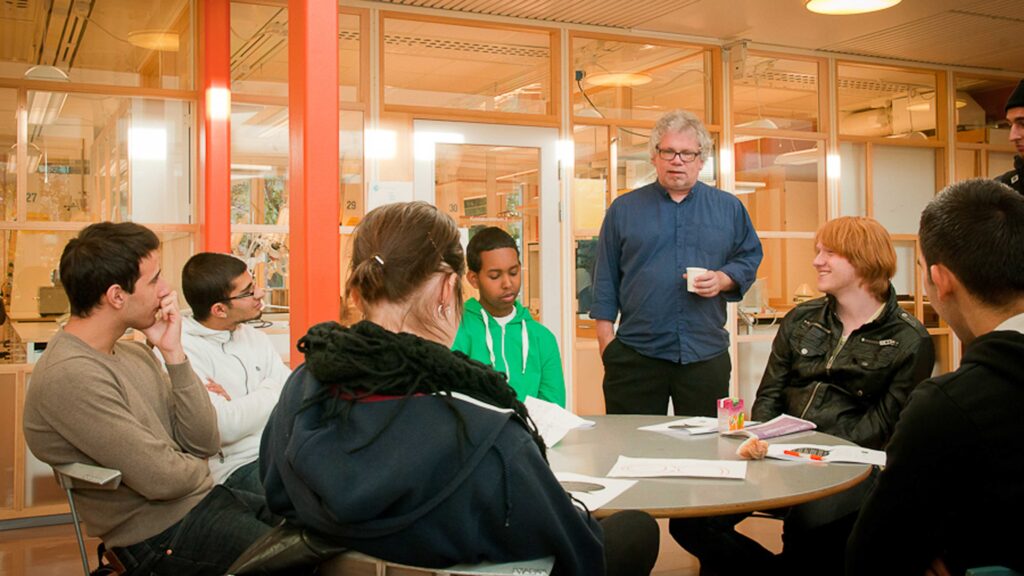Could people be made smarter by injecting stem cells into their brains? Should humans be cloned? These were a few of the questions discussed when school students met with researchers at a dialogue event in Stockholm arranged by VA and Karolinska Institutet (KI, an medical university) on 12th October.

Ola Hermanson and Johan Holmberg, two stem cell researchers from the Karolinska Institutet explained how stem cells could help treat human diseases such as leukaemia, or damaged muscles after heart attacks.
Stem cells are cells that can either divide to build new stem cells or differentiate into many specialised cells such as muscle, blood or nerve cells. There are two broad types of stem cell – embryonic stem cells which can differentiate into any type of cell, or adult stem cells which differentiate into specifically determined cells. A film was screened showing how stem cells taken from the bone marrow of a patient could help repair a damaged heart following a heart attack. The stem cells were isolated by centrifugation and then injected into the heart.
“It is however very difficult to predict, if at all, what kind of cells will evolve from the injected adult stem cells. It is also possible that cancer cells develop from stem cells”, said Johan Holmberg. The participating students from Solna and Thorildsplan upper secondary schools also learned that it is so far not proven that injected stem cells can actually help build new muscle cells in a damaged heart.
Bone marrow transplantation is currently the only available stem cell treatment for leukaemia. But stem cells can be found anywhere in the body, for instance in the skin, in fatty tissues, in the brain or in the blood.
“We can take a little piece of your skin and make a nerve cell out of it!” Ola Hermanson explained.
He went on to explain some highly topical research involving transforming adult stem cells into undifferentiated stem cells similar to embryonic stem cells. But whether these findings will lead to new treatments is still unclear, the Karolinska researchers added.
Participants were then divided into smaller groups and invited to discuss a number of thought-provoking and challenging questions: Can someone become smarter by the transplantation of stem cells into the brain; or might eternal life be possible in the future by replacing old body parts with fresh ones produced via stem cells. There were lively discussions around these two questions and several others.
During the concluding plenary discussion Ola Hermanson and Johan Holmberg explained that stem cell therapy may be able to help in the fight against Parkinson’s and Multiple Sclerosis, but most probably not against Alzheimer’s and that there is no relationship between brain cells and intelligence.
Some of the students looked rather disappointed when the prospect of living forever was dashed by the researchers. The reason for this is that stem cells also get older: “It is like with an old car. You can repair it again and again, but at some point it is all over” Ola Hermanson said.
The event was part of the European Project ComScience which tests different ways of communicating science and health related research to the general public. At the start and the end of the meeting, students were asked to fill in questionnaires in order to evaluate the event and measure the learning experience. The aim of the project is to develop best practice on how to communicate research.
The event was organised by Vetenskap & Allmänhet, VA (Public & Science) in cooperation with the Karolinska Institutet (KI).
Heidi Armbruster-Domeyer
VA


